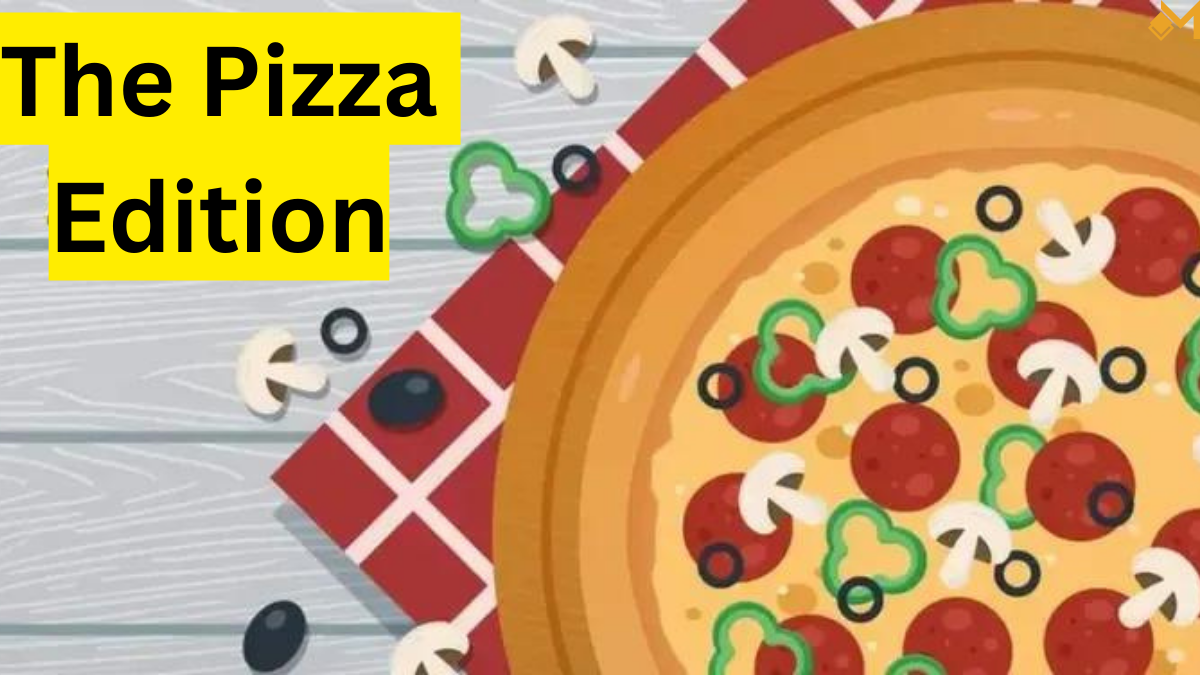Pizza, one of the most beloved dishes globally, has transcended its humble origins in Italy to become a worldwide phenomenon. It’s not just a meal; it’s a cultural icon, representing creativity, community, and indulgence. Whether it’s a thin, crispy Neapolitan pizza baked in a wood-fired oven, or a thick, cheesy Chicago deep-dish, pizza comes in countless variations, each with its unique charm. This article will take you on a deep dive into the world of pizza, exploring its history, different styles, regional variations, and its impact on food culture across the globe.
The Origins of Pizza
The story of pizza begins in ancient times. Flatbreads topped with ingredients have been consumed in various forms across the Mediterranean for centuries. However, the modern pizza, as we know it, is believed to have originated in Naples, Italy, during the 18th or early 19th century.
Naples, a bustling waterfront city, was home to many working-class families who needed affordable, filling food. Bakers began selling flatbreads topped with tomatoes, cheese, oil, anchovies, and garlic in the city’s streets. These early pizzas were simple yet delicious, and they soon became a favorite of locals and visitors alike.
Pizza’s real breakthrough moment came in 1889 when the Italian Queen Margherita visited Naples. A local pizzaiolo (pizza maker), Raffaele Esposito, created a pizza for the queen using ingredients that represented the colors of the Italian flag: red (tomatoes), white (mozzarella), and green (basil). This creation, known as Pizza Margherita, remains one of the most popular pizza varieties today.
Pizza’s Journey Across the World
As Italians emigrated across the globe, they took their beloved pizza with them. The early 20th century saw pizza spread across Europe and the United States, especially in cities with large Italian communities like New York and Chicago. Pizza parlors began popping up, introducing locals to this new and exciting dish.
Pizza’s international success can be largely attributed to World War II. American soldiers stationed in Italy fell in love with the dish and brought it back to the U.S. By the 1950s, pizza had become a mainstream American food, evolving to suit different tastes and regional preferences. The development of frozen pizza in the 1960s also played a role in making pizza accessible to households worldwide, forever solidifying its place in popular culture.
Different Styles of Pizza
As pizza spread globally, it began to evolve, taking on new forms in different regions. From thin, crispy crusts to thick, doughy bases, there’s a pizza for everyone. Here are some of the most famous pizza styles:
- Neapolitan Pizza
- Originating in Naples, this pizza style is known for its thin, soft crust. It’s typically baked in a wood-fired oven, which gives it a slightly charred and smoky flavor. Neapolitan pizza has minimal toppings, usually just tomato sauce, mozzarella, and basil. The dough is light, with a chewy center and crisp edges.
- New York-Style Pizza
- New York-style pizza features large, thin slices with a crispy, chewy crust, often folded and topped with sauce, cheese, and various toppings.
- Chicago Deep-Dish Pizza
- A stark contrast to the thin-crust varieties, Chicago deep-dish pizza is known for its thick, pie-like structure. The pizza is baked in a deep pan, giving it high, buttery crust edges. Layers of cheese, sauce, and toppings are piled high, and the sauce is typically placed on top of the cheese. Eating a deep-dish pizza is almost like eating a savory, cheesy pie.
- Sicilian Pizza
- Originating from the island of Sicily, this pizza is known for its thick, rectangular crust. Sicilian pizza cooks in a square pan, creating a crispy bottom and a light, airy center. Chefs usually spread the sauce over the dough, followed by cheese and other toppings. The most traditional versions are simple, with just tomato sauce, onions, herbs, and anchovies.
- Detroit-Style Pizza
- Detroit-style pizza has a rectangular shape, thick, crispy crust with caramelized edges, and cheese spread to the edges. Sauce is added last.
- California-Style Pizzas
- California-style pizza features a thin crust with unique toppings like goat cheese, artichokes, smoked salmon, and arugula.
Pizza and Global Food Culture
Pizzas is more than just a dish; it’s a global cultural phenomenon. Today, you can find pizzas in nearly every corner of the world, from high-end gourmet restaurants to local takeout joints. Its adaptability makes it a canvas for creativity, allowing chefs and home cooks alike to experiment with toppings, sauces, and crusts.
Pizzas has also found its way into popular culture. From pizza-themed merchandise to iconic pizzas scenes in movies, TV shows, and music videos, the dish has become a symbol of comfort and joy. In the U.S., pizzas delivery has become a ritual for game nights, movie marathons, and casual get-togethers. In countries like Japan and South Korea, chefs reimagine pizzas with unique toppings like squid, sweet potato, and even mayonnaise, creating fusion dishes that cater to local tastes.
Health Considerations: The Good and The Bad
While many associate pizzas with indulgence and high calories, not all pizzas is unhealthy. The nutritional content of a pizzas depends heavily on the ingredients used. A slice of Neapolitan pizzas, made with fresh tomatoes, mozzarella, and olive oil, can provide a good source of protein, vitamins, and healthy fats.
On the other hand, heavily processed pizzas, especially those loaded with excessive amounts of cheese, meats, and processed sauces, can be high in calories, sodium, and unhealthy fats. Frozen pizzas and fast-food varieties often contain preservatives and additives, which reduce the nutritional value of the meal.
For those looking to make pizzas a healthier option, homemade versions with whole grain crusts, low-fat cheese, and plenty of vegetables can provide a more balanced meal. Vegetarian and vegan pizzas have also become popular, offering a wide variety of plant-based toppings and dairy-free cheeses.
The Pizza Industry: A Booming Business
Pizzas is not just a culinary favorite; it’s a booming industry. Globally, the pizzas market is valued at over $160 billion, with the U.S. alone accounting for more than $45 billion of that figure. Major pizzas chains like Domino’s, Pizzas Hut, and Papa John’s dominate the market, but independent pizzerias still play a significant role, particularly in regions with strong pizzas traditions like New York City and Italy.
The rise of online ordering and delivery services has revolutionized the pizzas industry. Third-party apps like Uber Eats, DoorDash, and Grubhub have made it easier than ever to order pizzas at the click of a button. This convenience has contributed to a surge in pizzas sales, especially during events like the COVID-19 pandemic, where takeout became a lifeline for many businesses.
Pizzas Trends: What’s Next?
Pizzas continues to evolve with new trends emerging all the time. One of the biggest trends in recent years has been the rise of plant-based and gluten-free pizzas. With more people adopting vegetarian, vegan, and gluten-free diets, pizzerias and restaurants have begun offering alternatives that cater to these dietary preferences. Cauliflower crusts, almond flour bases, and vegan cheeses are becoming more common, making pizzas accessible to a wider audience.
Another trend is the gourmet pizzas movement, which elevates the humble pie to a fine-dining experience. Chefs are experimenting with high-quality ingredients like truffles, artisanal cheeses, and imported meats to create luxurious pizzas that appeal to foodies and gourmands. Wood-fired ovens, a staple of traditional Neapolitan pizza, have also seen a resurgence, with many restaurants investing in these ovens to provide authentic pizza experiences.
Pizzas fusion is another exciting trend, where different cuisines are combined with pizzas to create unique flavors. Tandoori chicken pizzas, sushi pizzas, and taco pizzas are just a few examples of how different cultural influences are being integrated into pizza-making.
FAQs
1. What is the history of pizzas?
Pizza originated in Naples, Italy, during the 18th century as a simple dish for the working class. Flatbreads topped with ingredients like tomatoes, cheese, and garlic were sold in the streets. The modern pizza, such as the famous Margherita, became popular in the late 19th century.
2. What are the different styles of pizzas?
Popular pizzas styles include Neapolitan (thin, soft crust), New York-style (large, wide slices with a crispy crust), Chicago deep-dish (thick, pie-like), Sicilian (rectangular and thick), and Detroit-style (rectangular with a caramelized crust).
3. Is pizzas healthy?
Pizzas can be both healthy and unhealthy depending on the ingredients. Homemade pizzas with whole grain crusts, fresh vegetables, and light cheese are a healthier option, while fast-food or processed pizzas tend to be high in calories, sodium, and unhealthy fats.
4. What are some popular pizzas trends today?
Current pizzas trends include plant-based and gluten-free options, gourmet pizzas with premium ingredients, and pizzas fusion, where flavors from different cuisines like sushi or tacos are combined with pizza.
5. How did pizzas become popular worldwide?
Pizzas spread globally through Italian immigrants and gained widespread popularity after World War II, especially in the U.S. The rise of pizzas chains, frozen pizzas, and delivery services helped cement its status as a beloved food worldwide.
Conclusion
From its modest beginnings in the streets of Naples to its current status as a global culinary icon, pizzas has come a long way. Its versatility, adaptability, and sheer deliciousness have made it a beloved dish for people of all ages and backgrounds. Whether you prefer a simple Margherita, a decadent deep-dish, or an experimental fusion pizzas, there’s no denying that pizzas holds a special place in the hearts (and stomachs) of millions around the world.
Sign up for our Daily newsletter
We'll be in your inbox every morning Monday-Saturday with all the day’s top business news, inspiring stories, best advice and reporting from Entrepreneur,


